Consider a cycle followed by an engine (figure.)
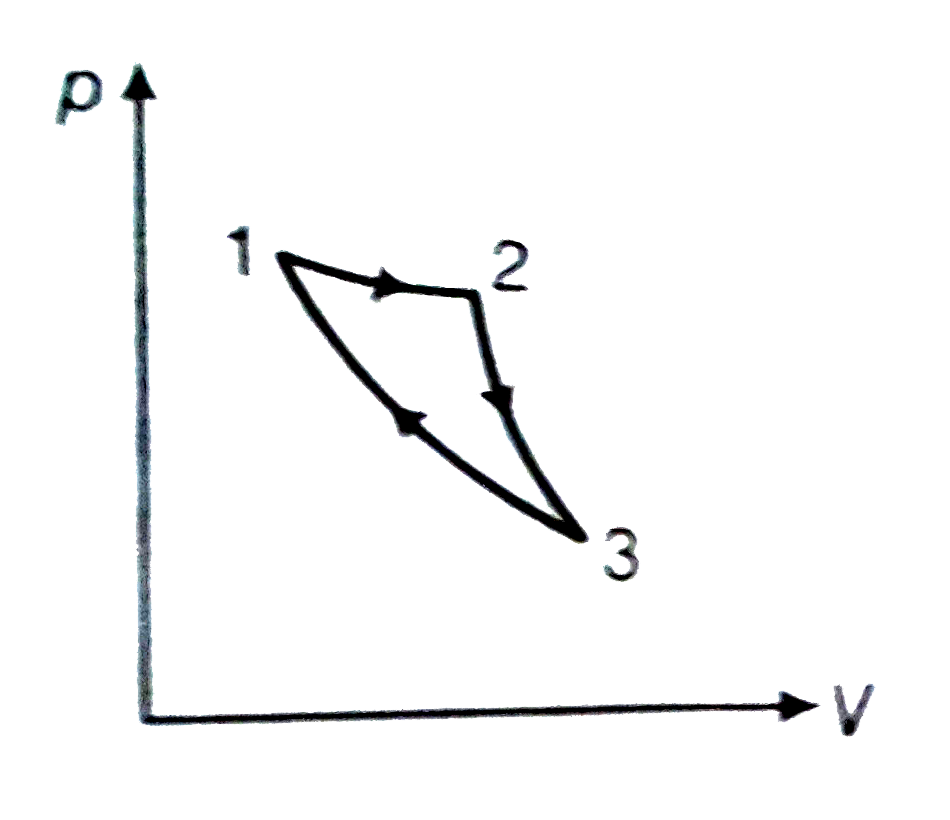
1 or 2 is isothermal
2 to 3 is adiabatic
3 to 1 is adiabatic
Such a process does not exist, because
heart is completely converted to mechanical energy in such a process, which is not possible
mechanical energy is completely converted to heart in this process, which is not possible
curves representing two adiabatic processes don't intersect
curves representing an adiabatic process and an isothermal process don't intersect
The correct Answer is:A, C
(a) The given process in a cyclic process i.e., it returns to the orignal state 1.
Hence, change in internal energy dU = 0
⇒ dQ=dU+dW=0+dW=dW
Hence, total heat supplied is converted to work done by the gas (mechanical energy) which is not possible by second law of thermodynamics.
(c ) When the gas expands adiabatically form 2 to 3. It is not possible to return to the same state without being heat supplied, hence the process 3 to 1 cannot be adiabatic.
Topper's Solved these Questions
- THERMODYNAMICS BOOK - NCERT EXEMPLAR ENGLISHCHAPTER - THERMODYNAMICS EXERCISE - VERY SHORT ANSWER TYPE QUESTIONS
5 Videos
- THERMODYNAMICS BOOK - NCERT EXEMPLAR ENGLISHCHAPTER - THERMODYNAMICS EXERCISE - SHORT ANSWER TYPE QUESTIONS
6 Videos
- THERMODYNAMICS BOOK - NCERT EXEMPLAR ENGLISHCHAPTER - THERMODYNAMICS EXERCISE - LONG ANSWER TYPE QUESTIONS
5 Videos
- THERMAL PROPERTIES OF MATTERBOOK - NCERT EXEMPLAR ENGLISHCHAPTER - THERMAL PROPERTIES OF MATTEREXERCISE - Very short Answer type Questions
15 Videos
- UNITS AND MEASUREMENTS BOOK - NCERT EXEMPLAR ENGLISHCHAPTER - UNITS AND MEASUREMENTS EXERCISE - Long Answer Type Questions
9 Videos
Similar Questions
The carnot cycle of a reversible heat engine consist of
A. one isothermal and two adiabatic processes
B. Two isobaric and one adiabatic processes
C. Two isothermal and two adiabatic processes
D. Two isobraic and two isothermal processes
View SolutionGiven here is a cyclic process on P -V diagram. Process 1-2 is isothermal, 2-3 is isobaric and 3-1 is an isochoric process. Plot this T - P diagram.
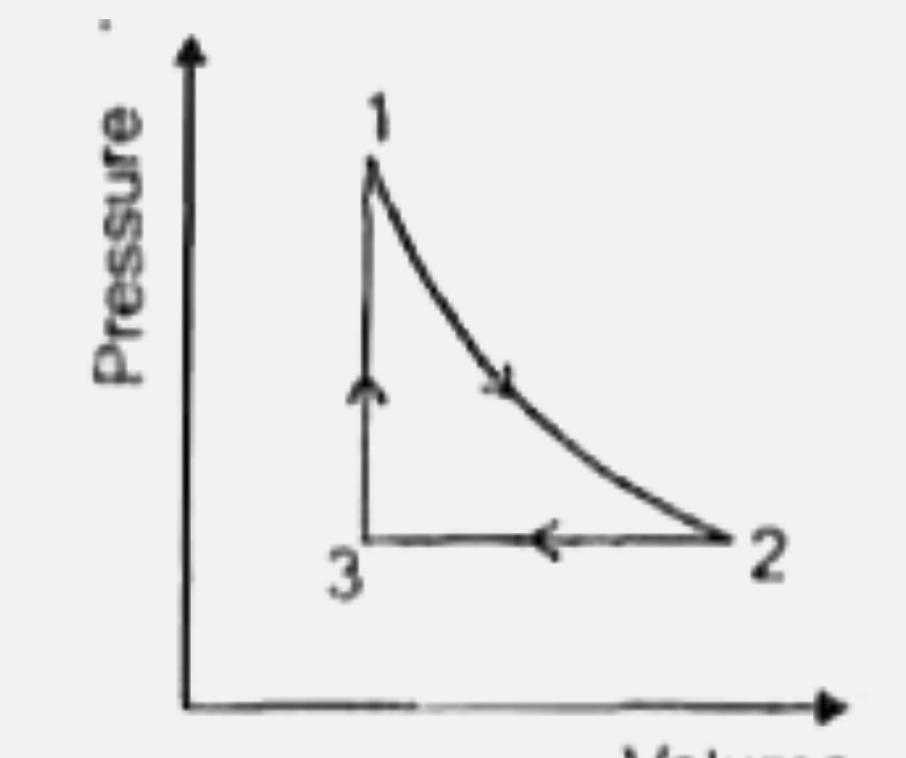
View Solution
Knowledge Check
Consider a cycle followed by an engine, (figure)
1 to 2 is isothermal 2 to 3 is adiabatic 3 to 1 is adiabatic
such a process does not exist because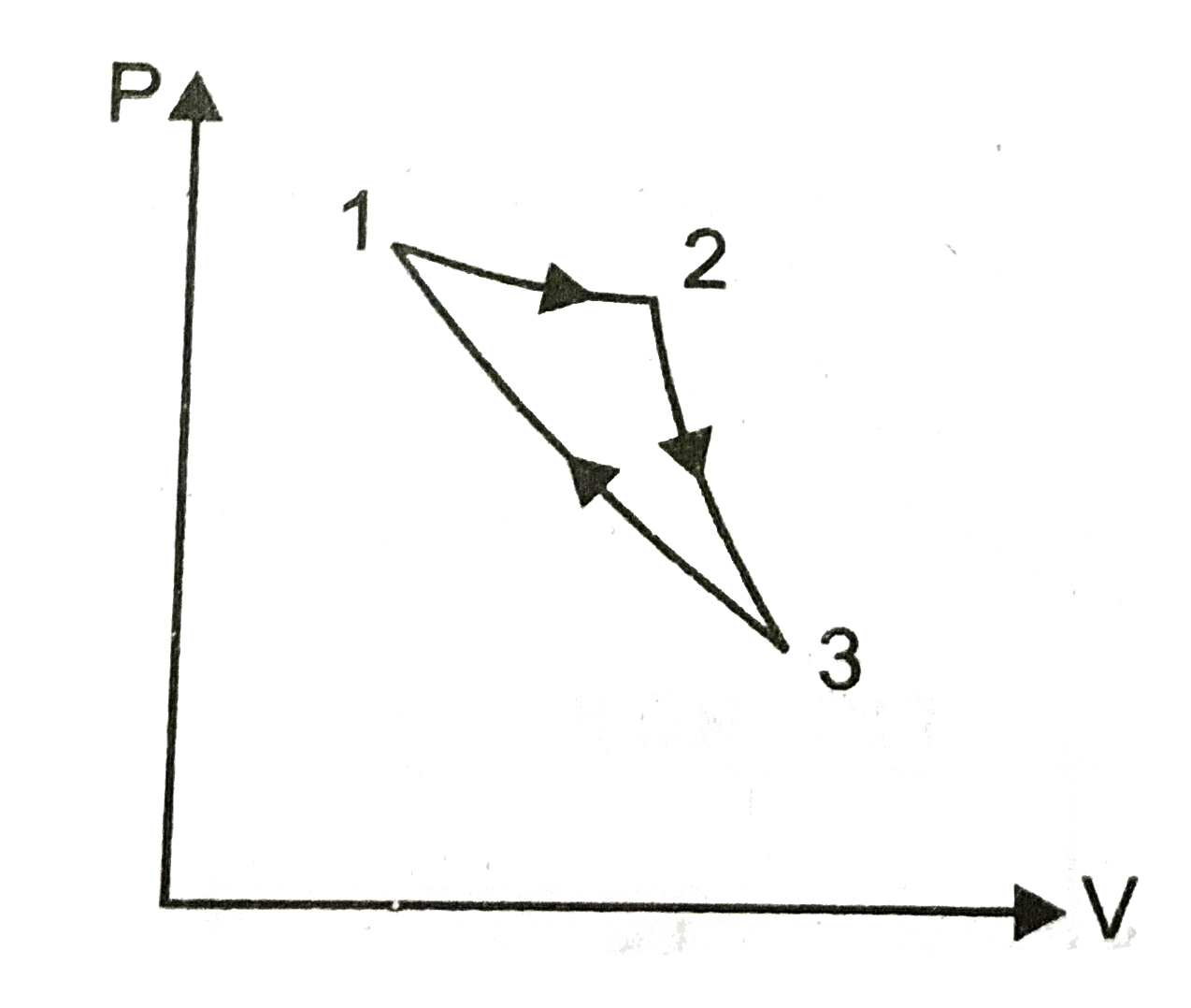 Aheat is completely converted to mechanical energy in such a process which is not possibleBmechanical energy is completely converted to heat in this process, which is not possibleCcurves representing two adiabatic processes can intersectDcurves representing an adiabatic process and an isothermal process don't intersect
Aheat is completely converted to mechanical energy in such a process which is not possibleBmechanical energy is completely converted to heat in this process, which is not possibleCcurves representing two adiabatic processes can intersectDcurves representing an adiabatic process and an isothermal process don't intersect
The curves A and B in the figure shown P-V graphs for an isothermal and an adiabatic process for an idea gas. The isothermal process is represented by the curve A.
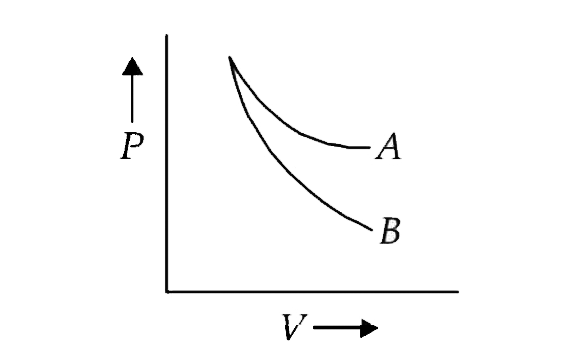
View SolutionThe curves A and B in the figure shown P-V graphs for an isothermal and an adiabatic process for an idea gas. The isothermal process is represented by the curve A.

View Solution
An ideal gas undergoes a cyclic process, in which one process is isochoric, one process is isothermal and one process is adiabatic. During the isothermal process, 40 J heat is released by the gas, and during the isochoric process, 80 J heat is absorbed by the gas. if work done by the gas during adiabatic process is W1 and during isothermal process is W2 then the magnitude of W1W2 will be equal to:
View SolutionA monoatomic ideal is used as the working substance for the carnot cycle shown in the figure. Processes AB and CD are isothermal, while processes BC and DA are adiabatic. During process AB, 400 J of work is done by the gasd on the surroundings. How much heat is expelled by the gas during process CD?
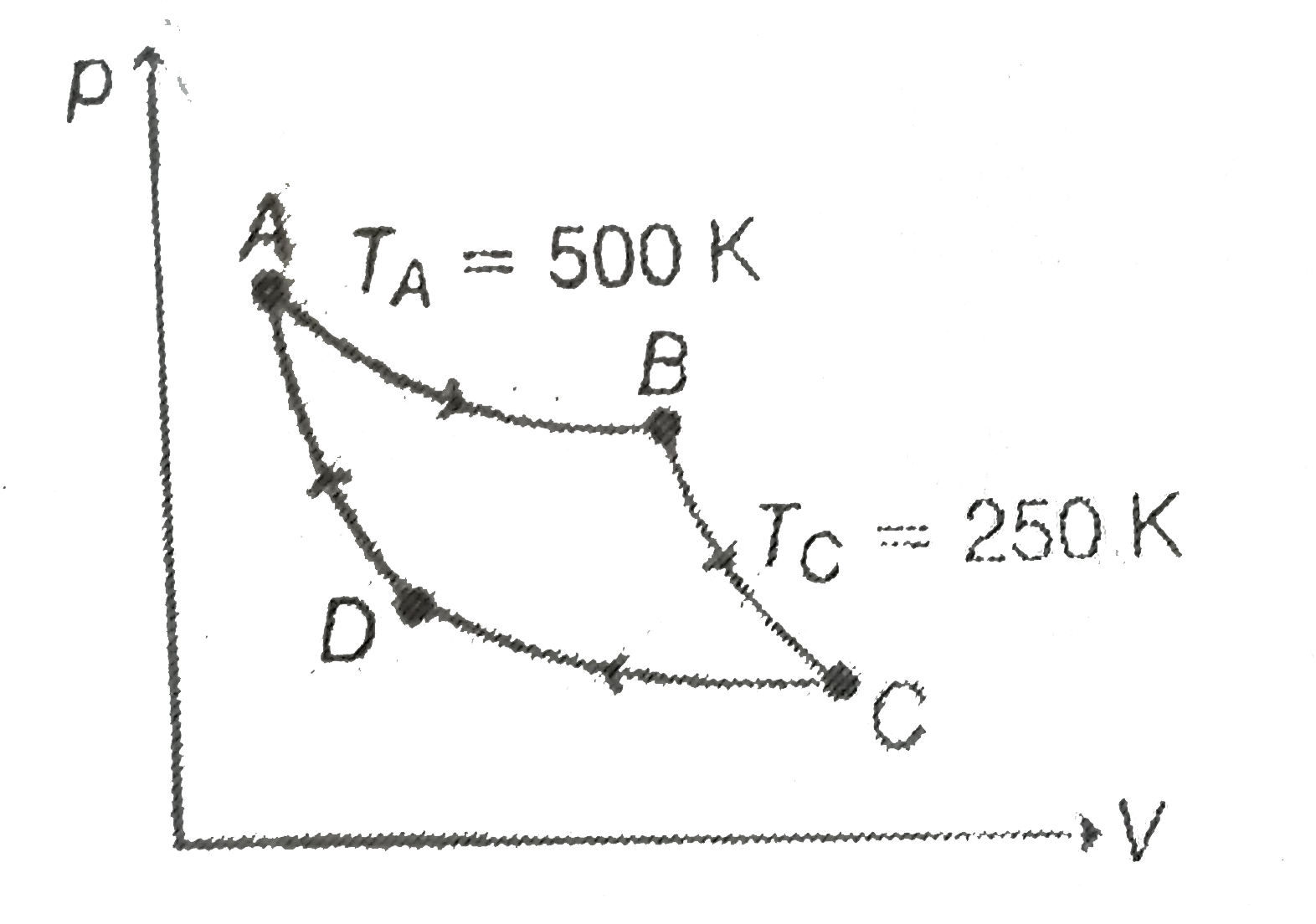
View SolutionAn ideal gas expands from V to 2V in 4 separate processes. Where process 1 is isothermal process 2 is adiabatic, process 3 is free expansion and process 4 is isobaric. If E1,E2,E3 and E4 are the changes in average kinetic energy of the molecules in the isothermal, adiabatic free expansion and isobaric process respectively then choose the correct options.
View SolutionA heat engine carries one mole of an ideal mono-atomic gas around the cycle as shown in the figure below. Process 1→2 takes place at constant volume, process 2→3 is adiabatic and process 3→1 takes place at constant pressure. Then the amount of heat added in the process 1→2 is
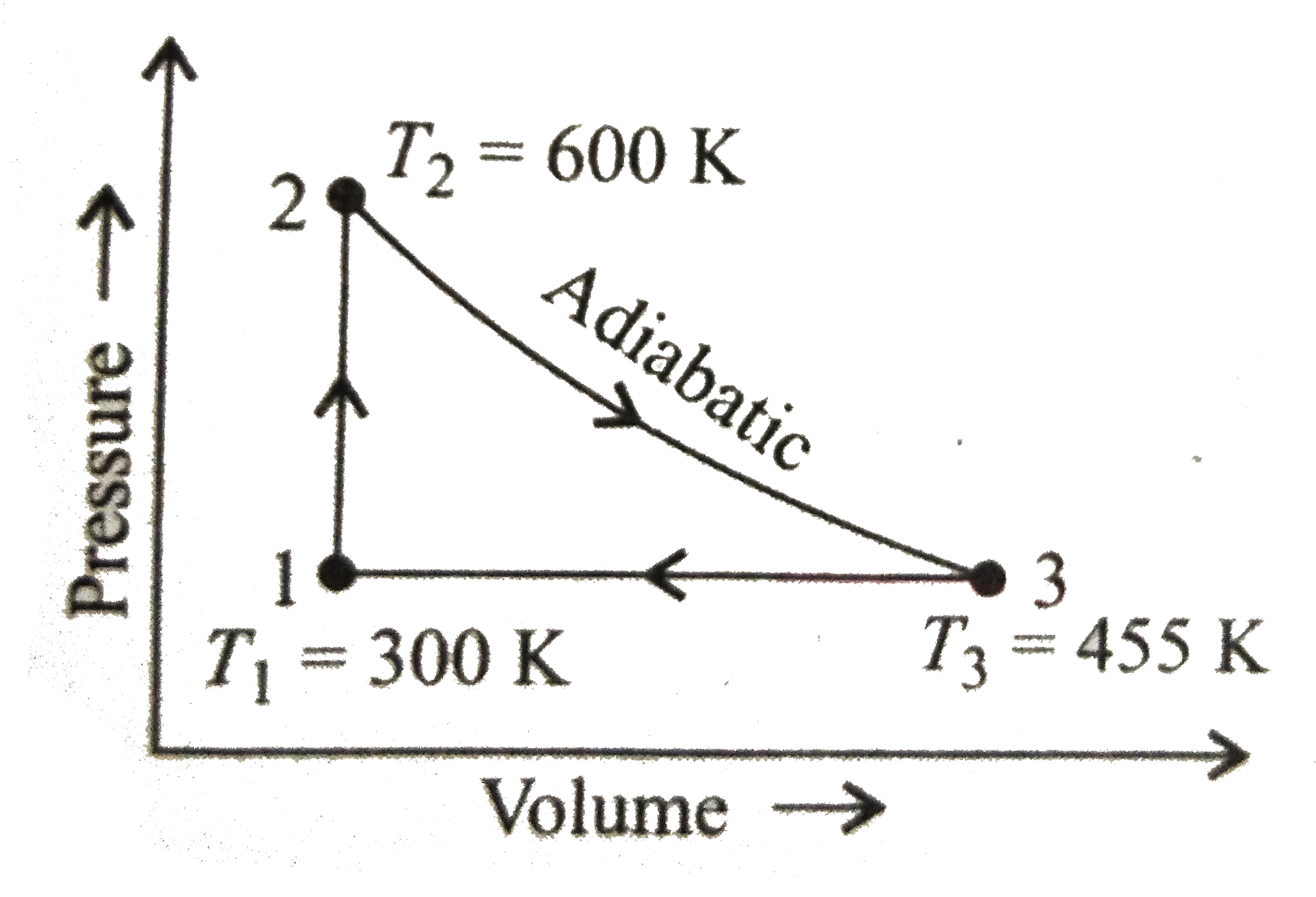
View SolutionFigure shows four PV diagrams. Which of these curves represent isothermal and adiabatic processes?
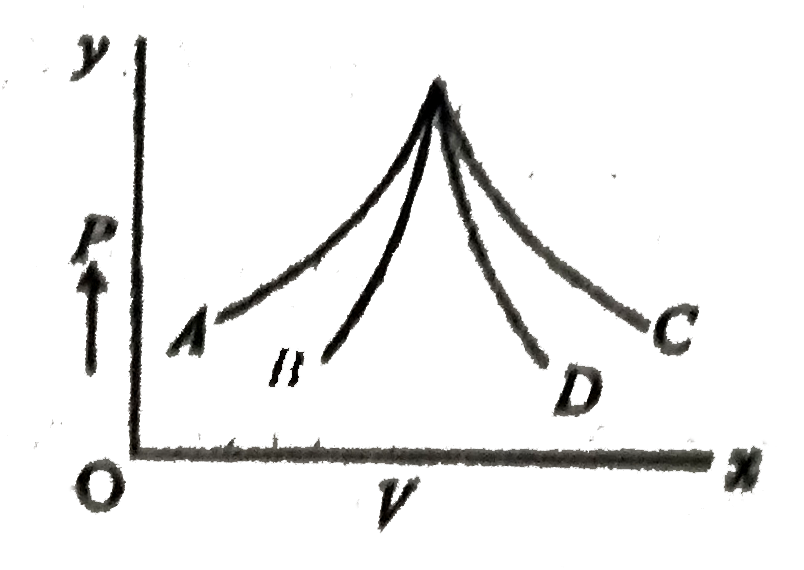
View Solution
